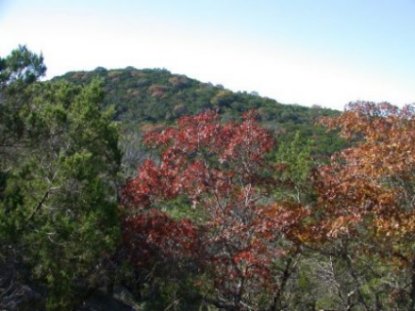Neighbors of Bright Leaf worry about fire risk
Monday, August 17, 2020 by
Jo Clifton After a City Council vote on July 29 allowing the city to take over management of Bright Leaf Preserve from the Austin Community Foundation, some residents worried about what that might mean for their Northwest Austin neighborhoods, especially in terms of wildfire prevention.
The 216-acre nature preserve, the legacy of Georgia B. Lucas, is located south of FM 2222 and Mesa Drive. The property provides habitat for rare and endangered species such as the golden-cheeked warbler. The Texas Parks and Wildlife Department, which had been managing the property under Lucas’ will, transferred management to the Austin Community Foundation in 2006. In 2017, the foundation put out a request for proposals to find another appropriate steward for the property. Austin Water, which is the steward for the Balcones Canyonlands Preserve, was selected. Foundation spokesperson Misty Whited said although the parties started talking at the beginning of the year, the conversation was delayed by Covid-19. She was not sure when the transfer would take place, but expected it to happen within the next few months.
In the meantime, residents have been asking the city how things might change. One member of the Highland Park/West Balcones Area Neighborhood Association wanted to know, “Will the city be more aggressive than the Austin Community Foundation was willing to be in cutting back vegetation, cutting fire breaks and other mitigation efforts in managing the risk of a wildland fire?”
District 10 Council Member Alison Alter represents the area that includes the preserve and nearby homes. Her office provided the following statement: “Questions about wildfire risk are important ones that will require consistent oversight and follow-through, but we certainly recognize it as an important priority that we want to advance and address. I will also note that this budget cycle the BCP is adding a Forestry Specialist position to enhance wildfire risk mitigation on their protected lands.” Alter added that she has “advanced other investments in wildfire mitigation and will continue to do so. In the past I think some have wished the preserve had taken additional wildfire mitigation under its previous private management. Now that it is within the city’s responsibility we will be positioned to have additional latitude to make those provisions.”
Alter’s office helped facilitate a community meeting via Zoom with Nico Hauwert, program manager for the Austin Water Balcones Canyonlands Preserve. He is likely to face a lot of questions about wildfire mitigation. As he pointed out in a letter to residents, “The BCP takes steps to actively minimize wildfire risks on its preserves including installing shaded fuel breaks and patrols to identify and eliminate potential ignition sources. Studies of the Austin area by Baylor University found that where tree canopies are maintained, fire risk is very low. That is why in over 80 years you have not heard of a fire at Bright Leaf Preserve and we experience few and very small fires in our other wooded preserves.”
Council Member Jimmy Flannigan asked whether taking over the preserve would cost the city any money. According to a written answer from staff members, “The Austin Community Foundation has agreed to pay upfront for needed fencing and building repair/demolition. Then, an annual endowment of roughly $20,000/year will be applied to maintain the preserve. The annual endowment is expected to cover all maintenance, as it is more than what is usually spent on most similar-sized (roughly 200 acres) preserves. Furthermore, Bright Leaf already has active volunteers to help as they have for decades now. After acquisition, Austin Water’s Wildlands Conservation Division can assist as needed with staff to help patrol, evaluate potential wildfire issues and conduct biological assessments.”
The fact that the city may be planning to make more of an effort to mitigate wildfire will certainly not mollify everyone. Former Texas Monthly publisher Mike Levy calls the Bright Leave Preserve “basically a large open gasoline can.” He cites a study from CoreLogic that names Austin as the fifth U.S. city most prone to catastrophic wildfire risk, behind Los Angeles, Riverside, San Diego and Sacramento.
Bob Nicks, president of the Austin Firefighters Association, told the Austin Monitor that his department did very well when it came to the budget, including funding of overtime, which has been a sore point in the past. He added, “The Wildland Division has gotten all the civilian and sworn positions it needs to start implementing the newly adopted WUI (wildland urban interface) code.”
It remains to be seen how aggressive Austin Water’s wildland fire specialists will be on preserve property. Certainly the coronavirus has put them behind the curve, much like almost everyone else.
The Austin Monitor’s work is made possible by donations from the community. Though our reporting covers donors from time to time, we are careful to keep business and editorial efforts separate while maintaining transparency. A complete list of donors is available here, and our code of ethics is explained here.
You're a community leader
And we’re honored you look to us for serious, in-depth news. You know a strong community needs local and dedicated watchdog reporting. We’re here for you and that won’t change. Now will you take the powerful next step and support our nonprofit news organization?









